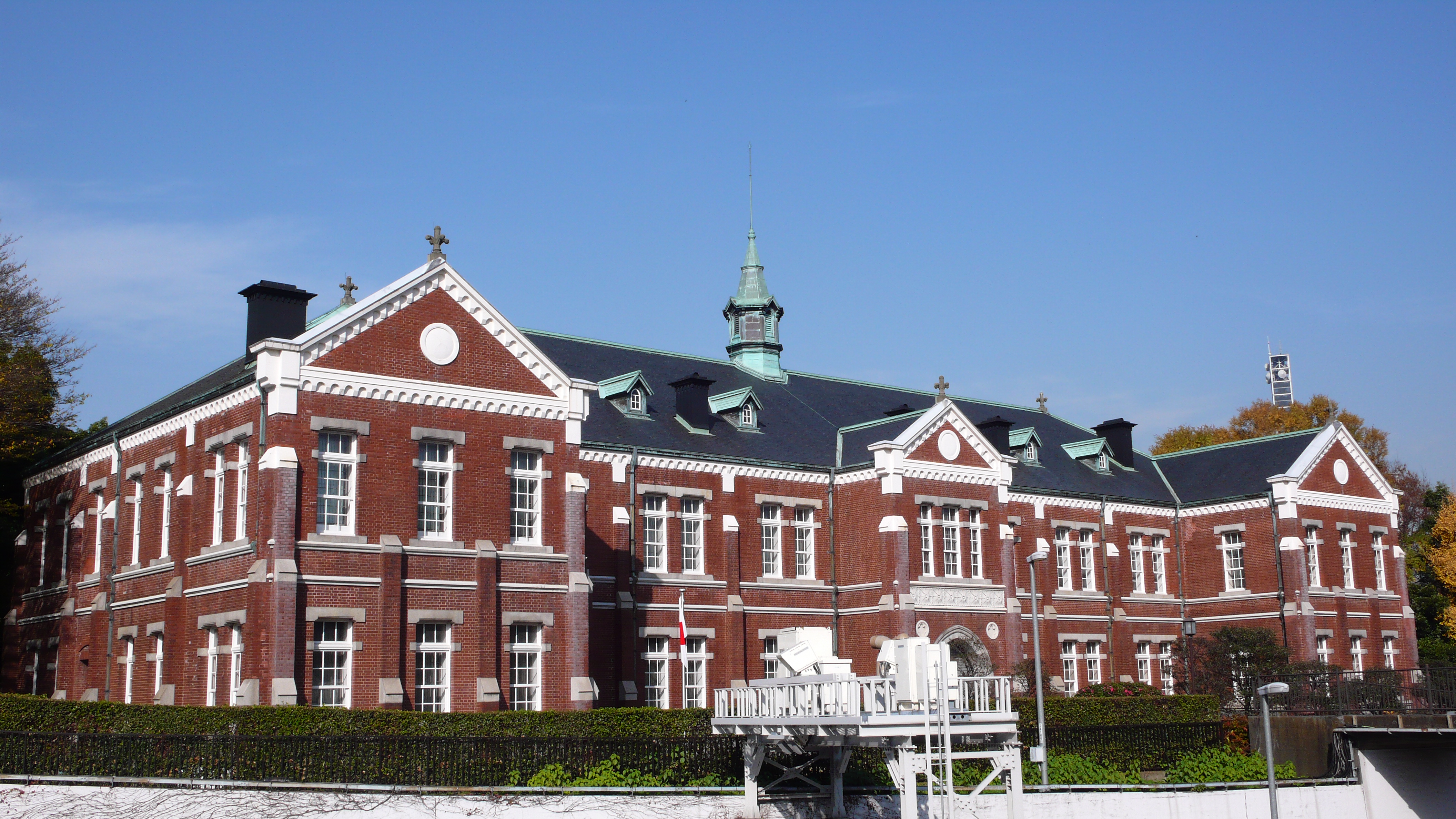|
Hyōe Ichinohe
was a Japanese soldier, military strategist, Imperial Japanese Army officer, and Shintō priest. A meticulous planner, the casualty rate of his command was far fewer than that of his fellow officers while achieving the same objectives. Biography Ichinohe was born as the eldest son of a samurai retainer in Tsugaru Domain (present day western Aomori Prefecture). Ichinohe enlisted in the fledgling Imperial Japanese Army and was commissioned in 1876 as a second lieutenant in the 2nd Infantry Regiment. Serving with distinction during the Satsuma Rebellion between February–September 1877, Ichinohe was wounded in battle and later awarded the rank of full lieutenant in May of that year. In February 1878, he was transferred to the 1st Infantry Regiment. During the First Sino-Japanese War, Ichinohe was commended for his actions while commanding the advance guard for the Ōshima Mixed Brigade at the Battle of Seonghwan on July 29, 1894, and later (as a lieutenant colonel) served as b ... [...More Info...] [...Related Items...] OR: [Wikipedia] [Google] [Baidu] |
Aomori Prefecture
is a Prefectures of Japan, prefecture of Japan in the Tōhoku region. The prefecture's capital, largest city, and namesake is the city of Aomori (city), Aomori. Aomori is the northernmost prefecture on Japan's main island, Honshu, and is bordered by the Pacific Ocean to the east, Iwate Prefecture to the southeast, Akita Prefecture to the southwest, the Sea of Japan to the west, and Hokkaido across the Tsugaru Strait to the north. Aomori Prefecture is the List of Japanese prefectures by area, 8th-largest prefecture, with an area of , and the List of Japanese prefectures by population, 31st-most populous prefecture, with more than 1.18 million people. Approximately 45 percent of Aomori Prefecture's residents live in its two Core cities of Japan, core cities, Aomori and Hachinohe, which lie on coastal plains. The majority of the prefecture is covered in forested mountain ranges, with population centers occupying valleys and plains. Aomori is the third-most populous prefecture i ... [...More Info...] [...Related Items...] OR: [Wikipedia] [Google] [Baidu] |
Lieutenant General
Lieutenant general (Lt Gen, LTG and similar) is a military rank used in many countries. The rank traces its origins to the Middle Ages, where the title of lieutenant general was held by the second-in-command on the battlefield, who was normally subordinate to a captain general. In modern armies, lieutenant general normally ranks immediately below general (or colonel general) and above major general; it is equivalent to the navy rank of vice admiral, and in air forces with a separate rank structure, it is equivalent to air marshal. In the United States, a lieutenant general has a three star insignia and commands an army corps, typically made up of three army divisions, and consisting of around 60,000 to 70,000 soldiers. The seeming incongruity that a lieutenant general outranks a major general (whereas a major outranks a lieutenant) is due to the derivation of major general from sergeant major general, which was a rank subordinate to lieutenant general (as a lieutenan ... [...More Info...] [...Related Items...] OR: [Wikipedia] [Google] [Baidu] |
IJA 1st Division
The was an infantry division in the Imperial Japanese Army. Its ''tsūshōgō'' was the . The 1st Division was formed in Tokyo in January 1871 as the , one of six regional commands created in the fledgling Imperial Japanese Army. The Tokyo Garrison had responsibility for the eastern region of Honshū (Kantō region), centered on the Tokyo metropolitan area. The six regional commands were transformed into divisions under the army reorganization of 14 May 1888, based on recommendations by the Prussian military advisor Jakob Meckel to the Japanese government. History As one of the oldest divisions in the Imperial Japanese Army, the 1st Division saw combat in the First Sino-Japanese War and the Russo-Japanese War. After the wars, the division returned to Tokyo, with permanent headquarters opened in Minami-Aoyama 15 June 1918. The February 26 Incident was an attempted coup d'état staged by elements of the 1st Division in Tokyo in 1936. As the situation on the Soviet border was ... [...More Info...] [...Related Items...] OR: [Wikipedia] [Google] [Baidu] |
Battle Of Mukden
The , one of the largest land battles to be fought before World War I and the last and the most decisive major land battle of the Russo-Japanese War, was fought from 20 February to 10 March 1905 between Japan and Russia near Mukden in Manchuria. The city is now called Shenyang, the capital of Liaoning province in China. Involving 610,000 combat participants and 164,000 combatant casualties, it was the largest modern-era battle fought prior to World War I, and possibly the largest battle in world history at that point. The scale of the battle, particularly in the amount of ordinance being expended, was unprecedented in world history. The Japanese side alone fired 20.11 million rifle and machine gun rounds and 279,394 artillery shells in just over ten days of fighting (yet the Russians still fired more), matching the ammunition consumption of the German army in the entire 191-day Franco-Prussian War and more than the British had fired during the entire Second Boer War ... [...More Info...] [...Related Items...] OR: [Wikipedia] [Google] [Baidu] |
Ōyama Iwao
was a Japanese Field Marshal (Japan), field marshal, and one of the founders of the Imperial Japanese Army. He was representative of the outstanding military commanders of the late modern period. Biography Early life Ōyama was born in Kagoshima to a ''samurai'' family of the Satsuma Domain. He was a younger paternal cousin to Saigo Takamori. A protégé of Ōkubo Toshimichi, he worked to overthrow the Tokugawa Shogunate and thus played a major role in the Meiji Restoration. He served as the commander of the Detached First Brigade during the Boshin War. At the Battle of Aizu, Ōyama was the commander of the Satchō Alliance, Satchōdo's field artillery positions on Mount Oda. During the course of the siege, he was wounded by an Aizu guerilla force under Sagawa Kanbei. Since at least 1904, local accounts have confused Ōyama Iwao with Sukeichi Oyama (1858-1922), Japanese Engraving, engraver who studied at Temple Hill Academy in Geneseo, New York, Geneseo, New York, United St ... [...More Info...] [...Related Items...] OR: [Wikipedia] [Google] [Baidu] |
Marshal
Marshal is a term used in several official titles in various branches of society. As marshals became trusted members of the courts of Middle Ages, Medieval Europe, the title grew in reputation. During the last few centuries, it has been used for elevated offices, such as in military rank and civilian law enforcement. In most countries, the rank of Field marshal, Marshal is the highest Army rank (equivalent to a five-star General of the Army (United States), General of the Army in the United States). Etymology ''Marshal'' is an ancient loanword from Old French ''mareschal'' (cf. Modern French ''maréchal''), which in turn is borrowed from Old Frankish *' "stable boy, keeper, servant", attested by Medieval Latin ''mariscalcus'' from a Proto-Germanic ''*maraχskalkaz'' (cf. Old High German ''marahschalh'')p. 93b-283a, T. F. Hoad, ''The Concise Oxford Dictionary of English Etymology'' (Oxford University Press, 1993) being still evident in Middle Dutch ''maerscalc'', ''marscal'', ... [...More Info...] [...Related Items...] OR: [Wikipedia] [Google] [Baidu] |
Japanese Third Army
The was an army of the Imperial Japanese Army based in Manchukuo as a garrison force under the overall command of the Kwantung Army during World War II, but its history dates to the Russo-Japanese War. History The Japanese 3rd Army was initially raised during the Russo-Japanese War under the command of General Nogi Maresuke. In the initial stages of the war, its primary mission was the Siege of Port Arthur. After the fall of that Russian stronghold, it was transferred north, where it played a crucial role in the subsequent Japanese drive towards Mukden in the closing stages of the war. It was disbanded at the end of the war. The Japanese 3rd Army was raised again on January 13, 1938, in Manchukuo as a garrison force to guard the eastern borders against possible incursions by the Soviet Red Army. It afterwards came under the command of the Japanese First Area Army in July 1942. As the war situation deteriorated for the Japanese in southeast Asia, the more experienced units a ... [...More Info...] [...Related Items...] OR: [Wikipedia] [Google] [Baidu] |
IJA 6th Division
The was an infantry division in the Imperial Japanese Army. Its call sign was the . Actions The 6th Division was formed in Kumamoto City on 12 May 1888, as one of the new divisions to be created after the reorganization of the Imperial Japanese Army away from six regional commands and into a divisional command structure, as per the recommendations of the Prussian military advisor Jakob Meckel to the Japanese government. Its troops were drawn primarily from the southern prefectures of Kyūshū. First Sino-Japanese War to Tanggu Truce The division participated in combat during the First Sino-Japanese War at the Battle of Weihaiwei. In the Russo-Japanese War it participated in the Battle of Shaho under the command of the 2nd Army and in the Battle of Mukden under the command of the 4th Army. On 29 April 1910 the divisional headquarters building was demolished, and the headquarters was assigned temporarily in Kumamoto Kaikosha 22 June 1916 until a new building on the grounds of K ... [...More Info...] [...Related Items...] OR: [Wikipedia] [Google] [Baidu] |
Chief Of Staff (military)
The title chief of staff (or head of staff) identifies the leader of a complex organization such as the armed forces, institution, or body of persons and it also may identify a principal staff officer (PSO), who is the coordinator of the supporting staff or a primary aide-de-camp to an important individual, such as a president, or a senior military officer, or leader of a large organization. In general, a chief of staff provides a buffer between a chief executive and that executive's direct-reporting team. The chief of staff generally works behind the scenes to solve problems, mediate disputes, and deal with issues before they are brought to the chief executive. Often chiefs of staff act as a confidant and advisor to the chief executive, acting as a sounding board for ideas. Ultimately the actual duties depend on the position and the people involved. Civilian Government Australia * Chief of Staff to the Prime Minister Brazil * Chief of Staff of the Presidency Canada * ... [...More Info...] [...Related Items...] OR: [Wikipedia] [Google] [Baidu] |
Imperial Guard Of Japan
The Imperial Guard of Japan has been two separate organizations dedicated to the protection of the Emperor of Japan and the Imperial Family, palaces and other imperial properties. The first was the , a quasi-independent elite branch of the Imperial Japanese Army, which was dissolved shortly after World War II. The current organization is the , a civilian law enforcement organization that is part of the National Police Agency. Imperial Guard of the Imperial Japanese Army The Imperial Guard of the Imperial Japanese Army was formed in 1867. It became the foundation of the Imperial Japanese Army after the Emperor Meiji assumed all the powers of state during the Meiji Restoration. The Imperial Guard, which consisted of 12,000 men organized and trained along French military lines, first saw action in the Satsuma Rebellion. It was organized into the 1st Guards Infantry Brigade, which had the 1st and 2nd Regiments. The 3rd and 4th Regiments belonged to the 2nd Guards Infantry Brigade. ... [...More Info...] [...Related Items...] OR: [Wikipedia] [Google] [Baidu] |



